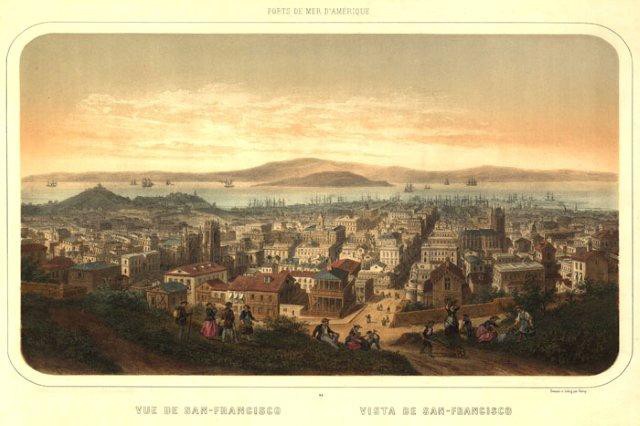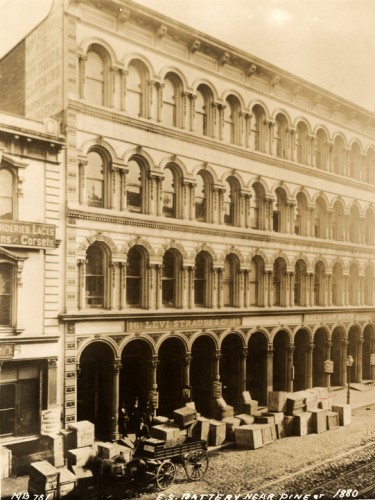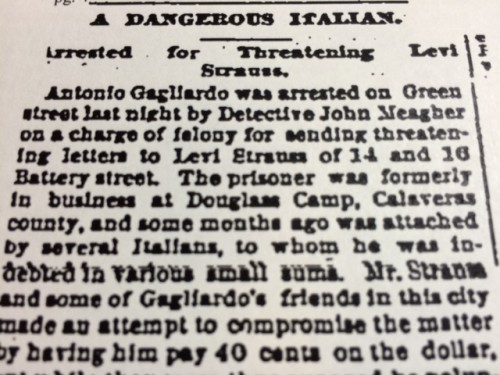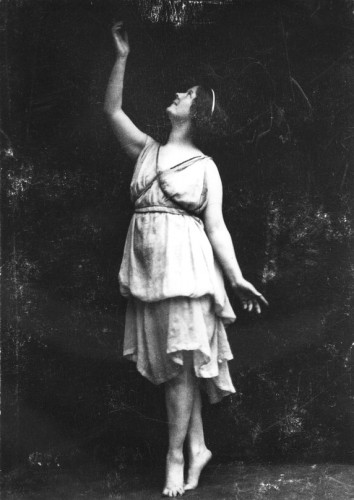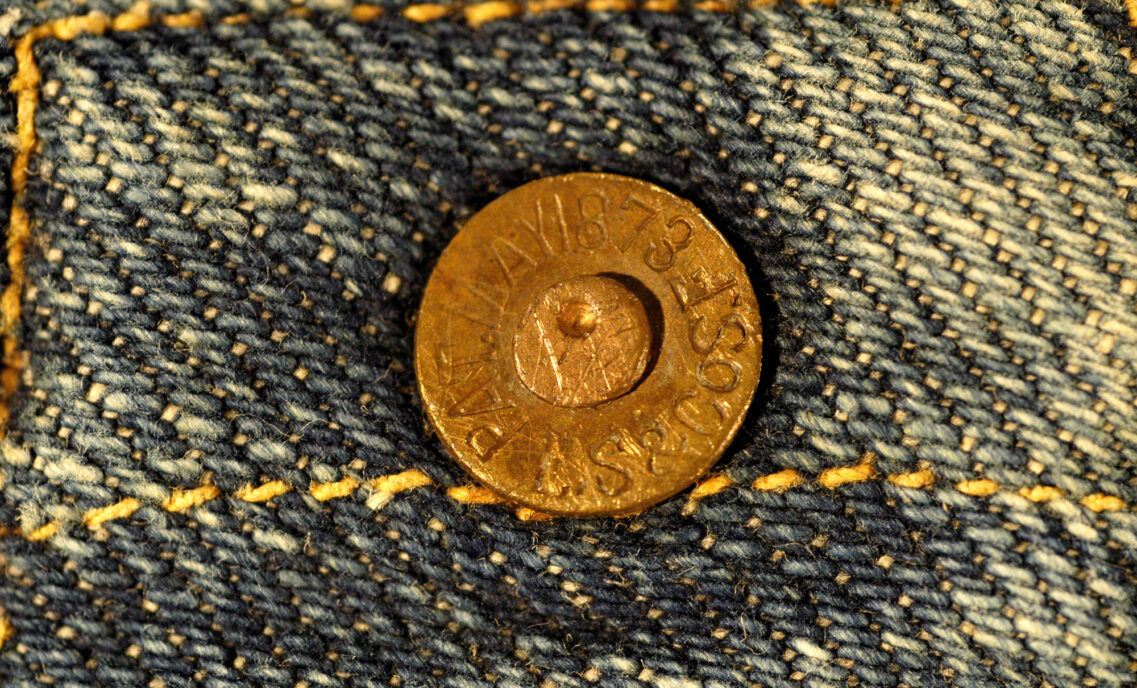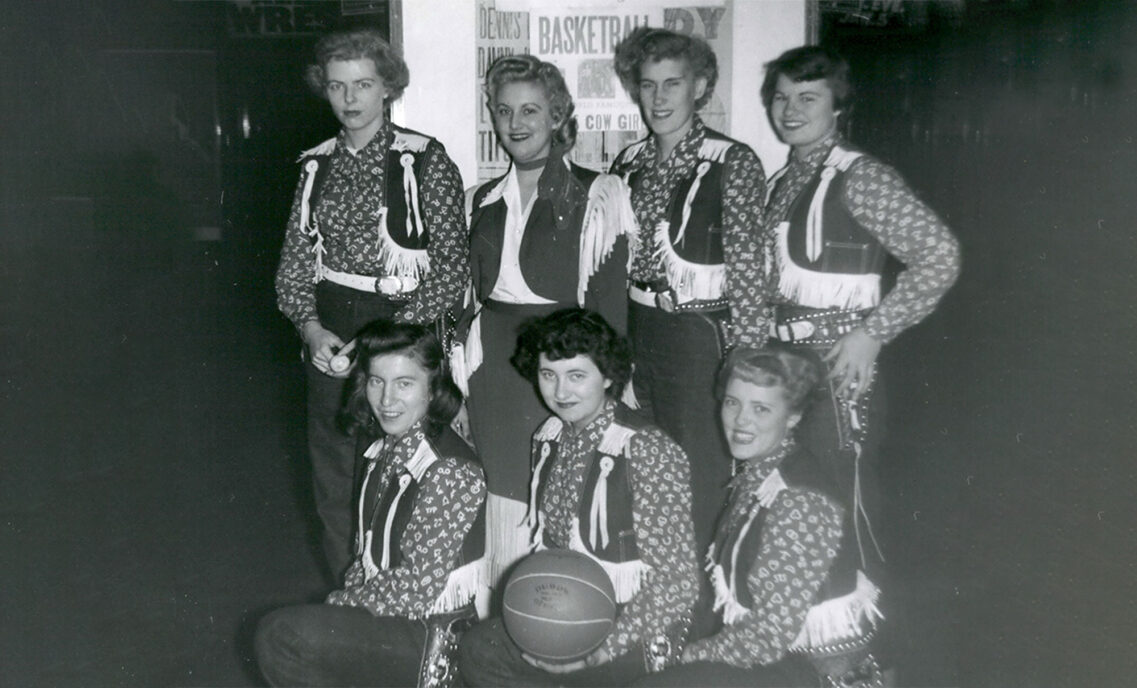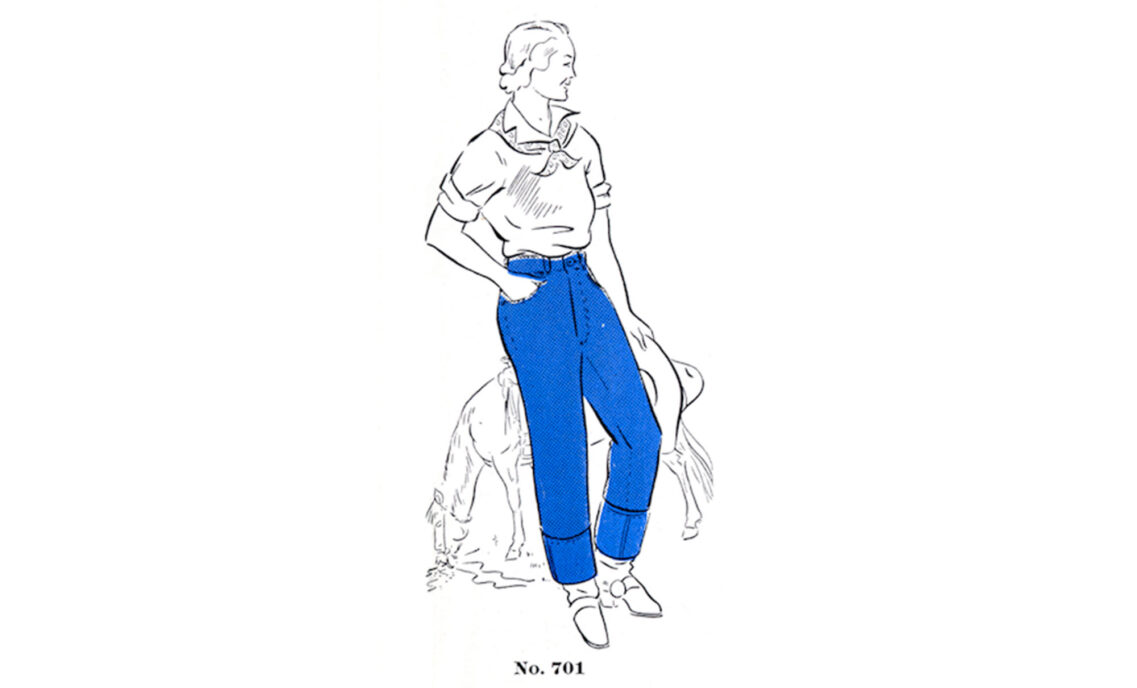Doing business in San Francisco in the 1800s was hard enough, but there were also people ready to fleece, scam, rob, or defraud local merchants and companies. Levi Strauss and his firm were not immune.
On April 15, 1873, for example, burglars tried to break into the company’s wholesale warehouse and headquarters at Battery and Pine Streets. They started to cut away part of the back door, but couldn’t do enough to get into the building, so they just took off. When workers came in the next day they saw the damage, called the police, and arranged to have it repaired. The men were never caught.
A man named C. Schwartz tried to break into Levi Strauss’s home in August of 1890, but was caught and put on trial. The result of the trial did not make the local papers, but it’s very likely he was found guilty.
More serious was the case of Antonio Gagliardo, a storekeeper and customer of Levi Strauss & Co. from Calaveras County, California. He was arrested on March 11, 1885 in San Francisco, charged with “felony in sending threatening letters to Levi Strauss, the well-known merchant of this city.” Gagliardo had gone out of business, fled to Los Angeles and then wrote to Levi, asking him to “use his influence” to help him obtain a clerical job. Levi sent him $50 instead (worth about $1,200 today), which apparently enraged Gagliardo. He wrote Levi again, and told him that he had ten days to help him get a job or he would “blow his (Levi’s) head off.”
Levi’s Italian-American acquaintances, many of whom knew Gagliardo, told him to have the man arrested, but Levi said he was simply “overexcited by his troubles.” However, when he learned that Gagliardo had made his way to San Francisco he was persuaded to tell the Chief of Police, who picked the man up and threw him in jail.
The case was thrown out of the police court at the beginning of April because Levi refused to prosecute. Why? Because the defendant “…promised to refrain from carrying his sanguinary promises into execution.” In other words, he promised not to shoot Levi, and Levi believed him.
Company employees also had their share of run-ins with the criminal element. Nat Tobias was a traveling salesman, living in Los Angeles in 1896. In July of that year he had quite a scary experience, as reported in the San Francisco Chronicle:
Tobias was driving along the road between Orange and Santa Ana, when he passed a man, who exclaimed: “Look out, there.” At the same time he pointed to the horse, apparently indicating that something was wrong with the harness. Springing from the vehicle, Tobias approached the horse, when suddenly the stranger dealt him a blow over the head with a slingshot. The blow inflicted a deep scalp wound. Tobias jumped back to the buggy, seized the whip and struck his assailant with the butt end with such violence that the man broke and ran. The Sheriff of Orange county is searching for the desperado.
Sometimes the fraudsters had names that would one day be famous. J.C. Duncan defrauded a San Francisco bank where he served as an officer, and defaulted on his creditors. One of them was Levi Strauss, who held a mortgage on the building where the bank had previously been located, and even though Levi reduced the mortgage by $15,000, Duncan still didn’t pay up. He fled the authorities, hid with a friend for awhile, but was eventually caught, tried, and imprisoned.
His daughter, Isadora Duncan, only a child when this all happened, later became world famous as one of the pioneers of the new modern dance movement in the early 20th century.
There are plenty more of these tales from our history. Keep checking Unzipped for future stories from the San Francisco underworld.
ABOUT THE AUTHOR
 Lynn Downey was the Levi Strauss & Co. Historian from 1989 to 2014. She is the author and/or co-author of nine books on the history of the West, including a number of works about the history of LS&Co. She has also published over thirty articles and book reviews. Lynn is currently at work on a biography of Levi Strauss, which will be released in 2016. Her website is at http://www.lynndowney.com.
Lynn Downey was the Levi Strauss & Co. Historian from 1989 to 2014. She is the author and/or co-author of nine books on the history of the West, including a number of works about the history of LS&Co. She has also published over thirty articles and book reviews. Lynn is currently at work on a biography of Levi Strauss, which will be released in 2016. Her website is at http://www.lynndowney.com.



